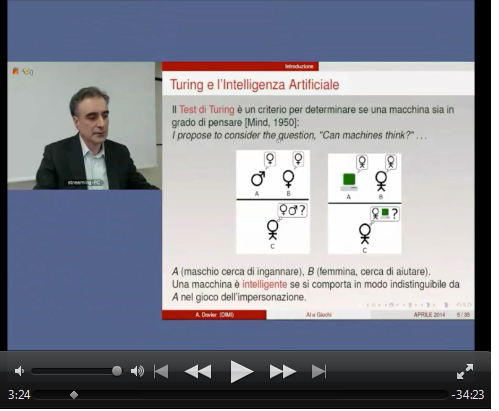Cliccando sulla foto (item 18) c’è una lezione on-line sul ruolo dei giochi in AI (realizzata per il progetto flash forward 2 organizzato dalle Università di Udine e Trieste).
-
Recent Posts
- Accepted paper at AAAI 2026 November 13, 2025
- Intervista sull’AI October 28, 2025
- New Journal paper August 28, 2025
- AI Act School September 13, 2024
- Constraint Propagation on GPU: A Case Study for the Cumulative Constraint. August 27, 2024
- Progetto PNRR May 23, 2024
- Constraint propagation on GPU: A case study for the AllDifferent constraint February 2, 2024
- A tutto bit September 20, 2023
- CILC 2023 July 17, 2023
- AIxIA 2022 December 22, 2022
- Tesi in trasferta September 20, 2022
- Doppio risultato del CLPLAB July 4, 2022
- Intervento a RADIO 24 June 24, 2022
- Presentazione risultati May 6, 2022
- AI4HRC Worskhop March 28, 2022





